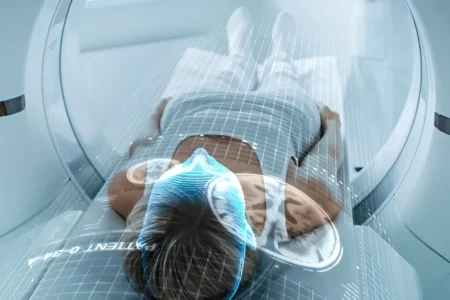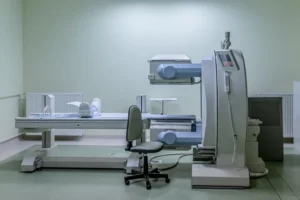Recent Advances in Breast Cancer Diagnosis and Treatment
- Updated on: Jul 29, 2024
- 4 min Read
- Published on Nov 19, 2020

Scenario of Breast Cancer
In the past few years, the prevalence of breast cancer has increased tremendously. About 1.7 million new cases of breast cancer are detected each year. According to the World Health Organization (WHO), around 520,000 deaths occur each year due to breast cancer. Researchers are working to study better insights to avoid its occurrence and ultimately cure the disease.
Scientists are identifying new and effective ways to diagnose, treat, and prevent breast cancer development. Following are some of the breast cancer breakthrough that scientists have been focusing on:
- Identifying new lab and imaging tests for breast cancer diagnosis
- Identifying new breast cancer treatment breakthrough
- Best ways to provide supportive care
- The causes of breast cancer
- New treatment options for metastatic breast cancer
- Different ways to reduce the risk of breast cancer development
- Management of ductal carcinoma in situ (DCIS)
Read More About: What Is Breast Cancer? (Female)
Read More About: Breast Cancer Survival Rate
Current Research on Breast Cancer Diagnosis
Currently, researchers are developing new and effective methods to allow easy and faster diagnosis of breast cancer. These methods can be non-invasive and have higher sensitivity for detecting the condition. They have developed a new imaging test that helps the doctor identify breast cancer, even by evaluating certain minute changes in your breast.
Read More About: Breast Cancer Diagnosis and Early Detection
Tests for Circulating Tumor Cells (CTCs)
Metastatic cancer cells get detached from the cancerous mass and start circulating in the blood. For identifying these circulating tumor cells in the blood, a sensitive test has been designed. This test only helps diagnose metastatic breast cancer but gives no clue about breast cancer’s survival rate or recurrence.
Scientists are looking for different ways to develop certain anti-cancerous drugs against these CTCs. This will also help in finding a new treatment against metastatic breast cancer.
Liquid Tumor Biopsy
This is a diagnostic test that can be used to identify tumor cell DNA in the bloodstream of patients. Clinicians can use this test for timely tracking of the effect of certain treatment procedures. Liquid tumor biopsy tests can guide clinicians about changes in treatment procedures and breast cancer progression.
Scintimammography: Molecular Breast Imaging Technique
In this procedure, a radioactive drug molecule known as the tracer is injected into the patient’s vein. The tracer molecule gets attached to cancerous cells in the breast, which is then detected with the help of a camera.
This method is presently at the research stages, and more information has to be gathered. Some doctors believe that this method will be effective in detecting breast cancer in dense areas of the breast in younger women.
Molecular Breast Imaging
Molecular breast imaging (MBI) is a primary imaging test to diagnose the recurrence of breast cancer. It easily detects cancer cells and scar tissue in the breast and confirms breast cancer in high-risk patients. It is an effective diagnostic technique than mammograms and traditional magnetic resonance imaging.
An MBI involves the insertion of a radioactive molecule, which is absorbed by breast cancer cells. Using a nuclear medicine scanner, the molecule gets illuminated and allows the identification of breast tumor cells’ exact location. It provides a complete 3-D view of your breast and helps your doctor remove the correct portion of your affected breast, thereby saving time during surgery.
Breast Cancer Research and Treatment
Current research on breast cancer is majorly focused to find new and effective ways to treat breast cancer. Some of the breast cancer breakthrough is as follows:
Read more about: Treatment For Breast Cancer
Chemotherapy
For breast cancer, chemotherapy is one of the best treatment methods. But it has both short-term as well as long-term effects. Scientists are discovering new methods to check whether a breast cancer patient should be given chemotherapy or not.
Some recent studies on breast cancer have proven that certain genomic testing tools such as a 21-gene assay (Oncotype Dx) or a 70-gene assay (Mammaprint) can be used for identifying the requirement of chemotherapy. These techniques, along with the clinicopathologic status of the patient, can be used to determine whether the patient requires chemotherapy or not. Besides, these are the first-generation genomic signature tests, which are useful in predicting the disease’s early relapses.
Researchers have also identified certain second-generation genomic signatures are also identified, such as PAM50 and Endopredict. These help in predicting late relapses of the condition to provide a follow-up for the next 5-10 years.
Read More About: Chemotherapy for Cancer
Oncoplastic Surgery
This method is a combination of both breast cancer surgery and plastic surgery techniques. It helps in reshaping the breast after the first breast cancer surgery. It also redesigns your breasts to give them a similar look.
Triple-Negative Breast Cancer
Such types of cancers are difficult to treat with hormone or targeted therapy. So the only option left is chemotherapy. Scientists are looking for new treatment options for triple-negative breast cancer patients. These cancers can be treated with kinase inhibitor drugs. The effectiveness of such drugs is being studied either individually or in combination with chemotherapy.
Immunotherapy
This type of treatment is used for activating the body’s immune system against cancerous cells. Doctors generally recommend immunotherapy in combination with chemotherapy or targeted drug therapy. Immunotherapy drugs for cancer treatment are still at their clinical trial stage. These drugs are useful for treating advanced breast cancers, triple-negative breast cancer, and cancers expressing the PDL-1 gene.
Targeted Therapy Drugs
Such drugs act against the cancer genes responsible for uncontrolled cells’ growth and the rapid spread of tumor cells. Researchers are looking for new targeted therapy drugs against breast cancer that will reduce the side effects of drugs and kill the targeted breast cancer cells. Such drugs can be given to patients who have HER2-negative breast cancer and had undergone chemotherapy before.












